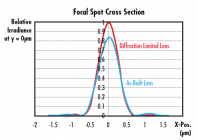Another fun weekend match filled with oodles of mirage. The Super ED glass in my scope lived up to its billing and I remained at 50X all day long. The IQ is affected, this is not magical glass after all, but the image is still usable, and I was able to place my shots very surgically. Unfortunately, I'm not a great surgeon and I got bit by fast switches and several elevation issues.
@PracticalTactical Thanks for reminding me of the fast focus ocular lens, I had forgotten about that one. I actually like that item very much. The way March has implemented it, you lock it in after you have found your setting. This way, there's no danger of it moving around by mistake. Kinda like the way some lockable turrets work.
Another newer neat feature is the sunshade. Mine is on all the time.
@PracticalTactical Thanks for reminding me of the fast focus ocular lens, I had forgotten about that one. I actually like that item very much. The way March has implemented it, you lock it in after you have found your setting. This way, there's no danger of it moving around by mistake. Kinda like the way some lockable turrets work.
Another newer neat feature is the sunshade. Mine is on all the time.













